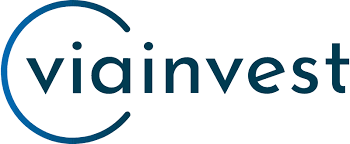DEBT HELP
Filing for Bankruptcy: What It Will Cost and How You Can Pay

Here’s What Happens When Your Credit Card Gets Charged Off
If you find yourself unable to figure out how to pay off debt and meet your obligations to lenders or creditors, you may be considering filing for bankruptcy. Chapter 7 and Chapter 13 are primary forms of personal bankruptcy, and both could help you minimize or eliminate your debt.
So, what’s the difference between Chapter 7 and Chapter 13?
Under Chapter 7, you’re expected to sell off your assets to repay your debt. You must also prove that your income is low enough to qualify for this filing. Under Chapter 13, however, you can keep your property in exchange for paying your debts off in a three- to five-year repayment plan.
But no matter which type of bankruptcy you file, it will cost you. Here’s what to expect.
How much does it cost to file bankruptcy?
The following is a list of common fees associated with each filing:
| Costs | Chapter 7 | Chapter 13 |
| Filing fees | $335 | $310 |
| Attorney fees* | $500 to $3,500 | $2,500 to $6,000 |
| Counseling fees | $50 | $50 |
| Total | $885 to $3,885 | $2,860 to $6,360 |
| *Attorney fees can vary greatly based on your location, the details of your case, and other factors | ||
Filing fees
Filing fees, which are the costs associated with processing your bankruptcy petition, are the same nationwide.
Chapter 7’s fees are broken down this way: a filing fee of $245, an administrative fee of $75, and a trustee surcharge fee of $15. Chapter 13’s costs are comprised of a $235 filing fee and a $75 administrative fee.
Attorney costs
Attorney fees can vary widely depending on where you live, the complexity of your case, and the attorney’s level of experience.
“Most experienced attorneys will charge extra for out-of-scope work such as representing the debtor in any adversary proceeding against them [or] seeking to discharge an educational loan, tax debt, etc.,” explains Florida-based attorney Donald E. Petersen.
In an effort to protect individuals from being overcharged, many bankruptcy courts have set “no-look” fees, which grant judges the right to review attorney costs if they’re over a certain threshold. This structure is more common in Chapter 13 filings.
You can attempt to represent yourself, which would eliminate attorney fees. You could also work with a bankruptcy petition preparer, who can help you fill out forms but can’t offer legal advice. Most experts, however, recommend hiring an attorney who specializes in consumer bankruptcy and can ensure you complete the necessary paperwork correctly.
Counseling fees and other expenses
Whether you file for Chapter 7 or Chapter 13, you’ll be required to receive credit counseling within six months of filing. These courses must be provided by an agency approved by the U.S Trustee Program.
Here’s How We Crushed $30,000 in Debt (While Also Saving for a Wedding)
Once you complete the counseling courses, you’ll receive a certificate of completion that you must file along with the rest of your bankruptcy paperwork. If you can’t afford counseling, let the agency know, as you may be able to receive a discount if you have a low income.
Other miscellaneous fees you may be charged by bankruptcy court include:
- $11 for the certification of any document
- $53 for any payment returned or denied for insufficient funds
- $31 to amend the list of the debtor’s creditors
- $293 for filing an appeal from a judgment, order, or decree
- $245 to reopen a Chapter 7 case
- $235 to reopen a Chapter 13 case
How can I pay for bankruptcy?
If you’re strapped for funds, chances are you’re wondering how to come up with the money to pay the fees associated with filing for bankruptcy. The following are ways to help you cover those costs:
1. See if you qualify for a fee waiver
Submit a fee waiver application along with your bankruptcy petition and schedules. To qualify, you must meet the following criteria:
- You are filing Chapter 7 bankruptcy as an individual (businesses don’t qualify for fee waivers)
- You have a combined family income that falls below 150% of the Department of Health and Human Services’ poverty guidelines
- You can substantiate why you can’t pay the fee in installments
2. Ask about a payment plan for filing or attorney fees
Whether you’re filing for Chapter 7 or Chapter 13, if you don’t have the funds to cover your filing fees, you can petition to pay in installments by completing Form 103A. This could allow you to pay off fees in up to four separate payments over 120 days.
Attorney fees may be spread out, too. “You can always try to negotiate with your attorney and try to work up a payment plan in monthly installments,” says Igor Mitic, co-founder of Fortunly. “Better yet, try to find an attorney that will work pro bono and take on your case for free.”
3. Research free legal aid
To see if you qualify for no- or low-cost legal services, check with your local Legal Services Corporation or the American Bar Association’s Legal Help site.
You can also look for an attorney who offers free consultations or check the National Association of Consumer Bankruptcy Attorneys’ website to compare fees and locate someone in your area who can advise you.
4. Find the money elsewhere
Should none of the above options work for you, consider picking up extra hours at work, finding a second job, or selling some of your belongings for cash. Or, as Mitic suggests, fundraise for yourself.
“Be honest with friends and family about your financial situation, host an event, or even set up a crowdfund [site] online,” he says. “This takes a lot of work but is doable.”
Filing for bankruptcy can help you reset your financial situation, but it isn’t free, nor is it a quick fix. Figure out which type of bankruptcy option best meets your needs and consider the help available to reach the best outcome.
Great for Over $20K in Debt
 Visit Freedom Debt Relief
Visit Freedom Debt Relief
Freedom Debt Relief Benefits
- Recommended for debts $27,000 and higher
- Resolve your debt in as little as 24 – 48 months
- They’ve helped save their clients over $10 billion
- Over 600,000 customers and counting
Visit Freedom Debt Relief
6 Ways to Help When Your Parents Are Drowning in Debt
Unmasking Online Deception: An In-Depth Social Catfish Review
Purple Garden Psychics – ($1/Min) FREE Trial Offers, Real Experience & Benefits And More

Refinancing an Auto Loan: How to Know If It’s a Good Idea

Reverse Mortgages Pros and Cons: Ripoff or a Good Idea?

8 Ways it Just Got Easier to Achieve Student Loan Forgiveness
Unmasking Online Deception: An In-Depth Social Catfish Review

Orchard Bank Credit Cards | NOT a Scam!

PrivacyGuard Review

How to choose where to study as an international student


